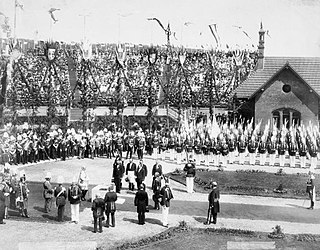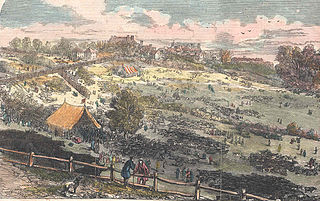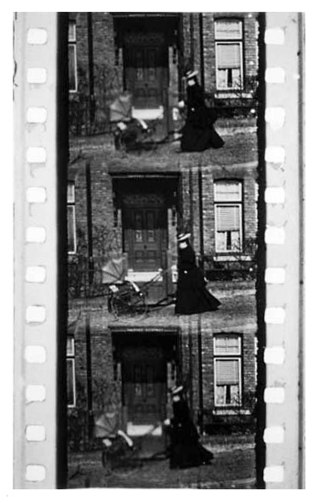Related Research Articles

The London Borough of Barnet is a local authority area on the northern outskirts of London. The borough was formed in 1965 from parts of the ceremonial counties of Middlesex and Hertfordshire. It is the second largest London borough by population with 389,344 inhabitants as of 2021, also making it the 17th largest district in England. The borough covers an area of 86.74 square kilometres (33 sq mi), the fourth highest of the 32 London boroughs, and has a population density of 45.8 people per hectare, which ranks it 25th.
The following is an overview of the events of 1896 in film, including a list of films released and notable births.

Chipping Barnet or High Barnet is a suburban market town in north London, forming part of the London Borough of Barnet, England. It is a suburban development built around a 12th-century settlement, and is located 10+1⁄2 miles (17 km) north-northwest of Charing Cross, 3 miles (4.8 km) east from Borehamwood, 5.2 miles (8.4 km) west from Enfield and 3.2 miles (5.1 km) south from Potters Bar. Its population, including its localities East Barnet, New Barnet, Hadley Wood, Monken Hadley, Cockfosters and Arkley, was 47,359 in 2011.

Birt Acres was an American and British photographer and film pioneer. Among his contributions to the early film industry are the first working 35 mm camera in Britain (Wales), and Birtac, the first daylight loading home movie camera and projector. He also directed a number of early silent films.

Actuality film is a non-fiction film genre that uses footage of real events, places, and things, a predecessor to documentary film. Unlike documentaries, actuality films are not structured into a larger narrative or coherent whole. During the era of early cinema, actualities—usually lasting no more than a minute or two and usually assembled together into a program by an exhibitor—were just as popular and prominent as their fictional counterparts. The line between "fact" and "fiction" was not as prominent in early cinema as it would become once documentaries became the predominant non-fiction filmmaking form. Actuality as a film genre is related to still photography.

The Brent Reservoir is a reservoir in North West London. It straddles the boundary between the boroughs of Brent and Barnet and is owned by the Canal & River Trust. The reservoir takes its informal name from a public house called The Welsh Harp, which stood nearby until the early 1970s. It is a 68.6-hectare (170-acre) biological Site of Special Scientific Interest (SSSI), the only SSSI in either borough and among more than 30 SSSIs in Greater London.

Robert William Paul was an English pioneer of film and scientific instrument maker.
Arthur Melbourne Cooper was a British photographer and early filmmaker best known for his pioneering work in stop-motion animation. He produced over three hundred films between 1896 and 1915, of which an estimated 36 were all or in part animated. These include Dreams of Toyland (1908) and according to some sources Dolly’s Toys (1901), as well as Matches: An Appeal, which Dutch independent researcher Tjitte de Vries has claimed may have been the first animated film to be shown in public.
Events from the year 1896 in the United Kingdom.
Events from the year 1895 in the United Kingdom.

The Derby is an 1895 British short black-and-white silent documentary film, produced and directed by Birt Acres for exhibition on Robert W. Paul's Kinetoscopes, featuring the end of the 29 May 1895 Epsom Derby viewed from a raised position close to the finishing line with the main stand in the distance. A photograph of Acres filming the documentary has survived, which shows that the camera used in the production was relatively portable. The film was long considered lost but footage discovered in the Ray Henville collection in 1995 has been identified by the BFI as being from this film.

Opening of the Kiel Canal is an 1895 British short black-and-white silent documentary news film directed and produced by Birt Acres which documents the opening of the Kiel Canal in Germany by Kaiser Wilhelm II on 20 June 1895. It was filmed between June 1895 and July 1895.

William Mecham was a British cartoonist and performer, taking the stage and pen name Tom Merry.

Barnet Fair is an annual horse and pleasure fair held near Mays Lane, Barnet, England, on the first Monday in September.
Daniel Birt was an English film director and editor.

Yarmouth Fishing Boats Leaving Harbour is an 1896 British short black-and-white silent documentary film, directed by Birt Acres, featuring a fleet of fishing smacks leaving the harbour at Great Yarmouth, Norfolk, UK.

Crude Set Drama is an 1895 British short black-and-white silent comedy film, produced and directed by Birt Acres for exhibition on Robert W. Paul's peep show Kinetoscopes, featuring two drunken men and a boy squabbling in a small bar. The film was long considered lost but footage discovered in the Henville collection in 1995 has been identified by the BFI as being from this film.

The Arrest of a Pickpocket is an 1895 British short black-and-white silent crime film, produced and directed by Birt Acres for exhibition on Robert W. Paul's peep show Kinetoscopes, featuring a policeman catching a pickpocket with the assistance of a passing sailor. The film was considered lost until footage from an 1896 Fairground Programme, originally shown in a portable booth at Hull Fair by Midlands photographer George Williams, donated to the National Fairground Archive was identified as being from this film.

Incident at Clovelly Cottage, also known as Incident Outside Clovelly Cottage, Barnet, shot by Birt Acres and produced by Acres and his collaborator Robert W. Paul in March 1895, was the "first successful motion picture film made in Britain".

The Lytton Road Assembly Rooms were built by E. Fergusson Taylor in New Barnet around 1870.
References
- ↑ "Watch A Corner of Barnet Fair online - BFI Player". player.bfi.org.uk. Retrieved 4 November 2024.
- ↑ "Barnet Market and Fair". Barnet Council. Retrieved 4 November 2024.